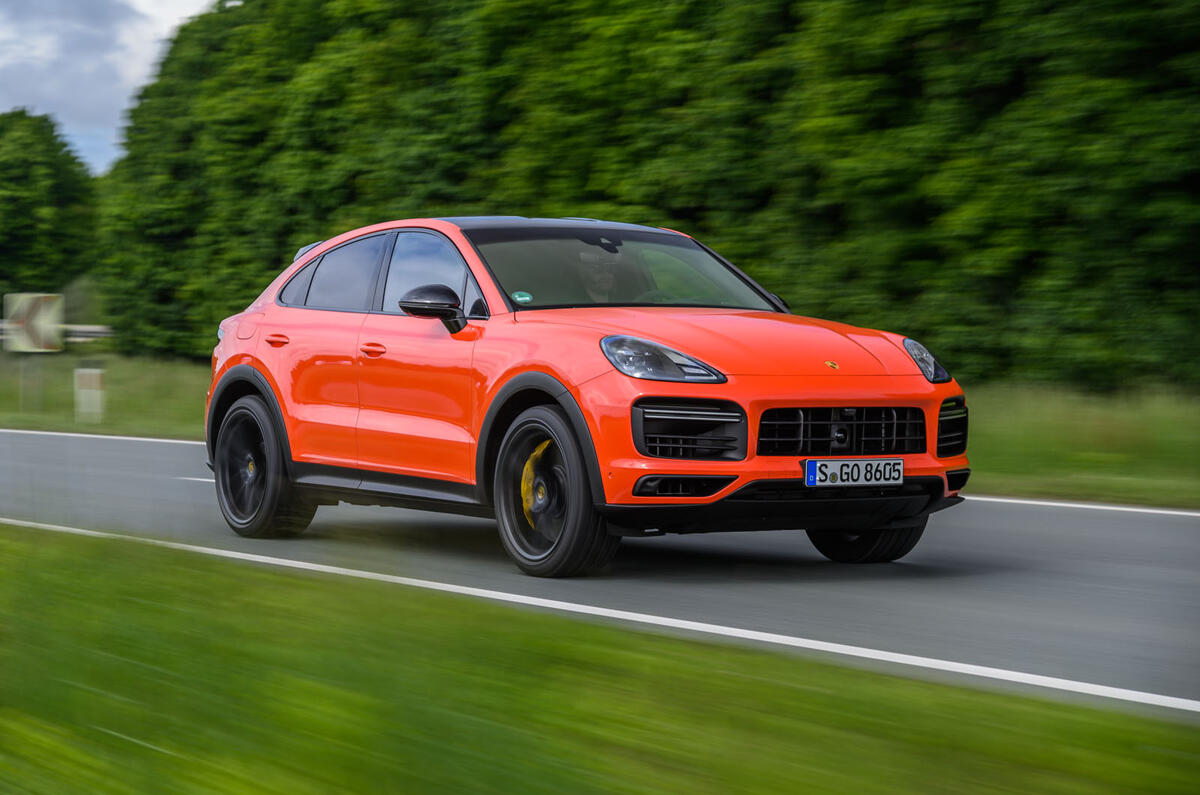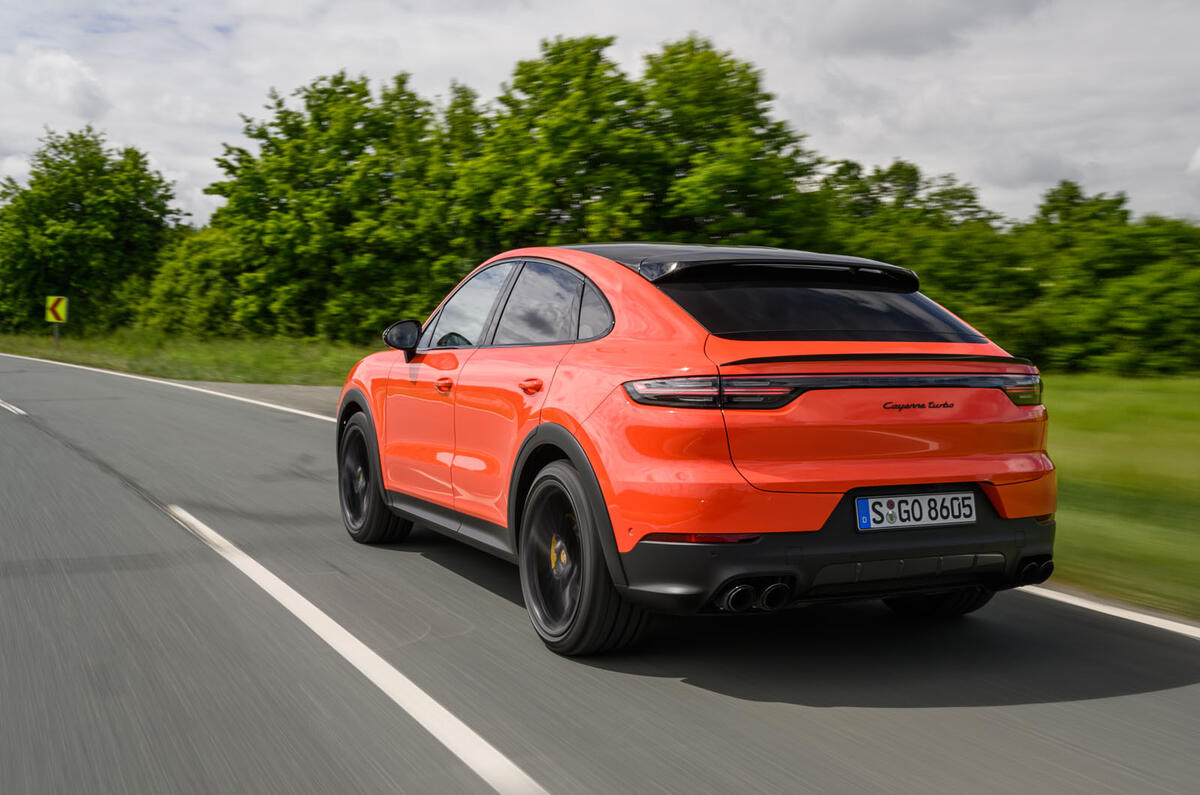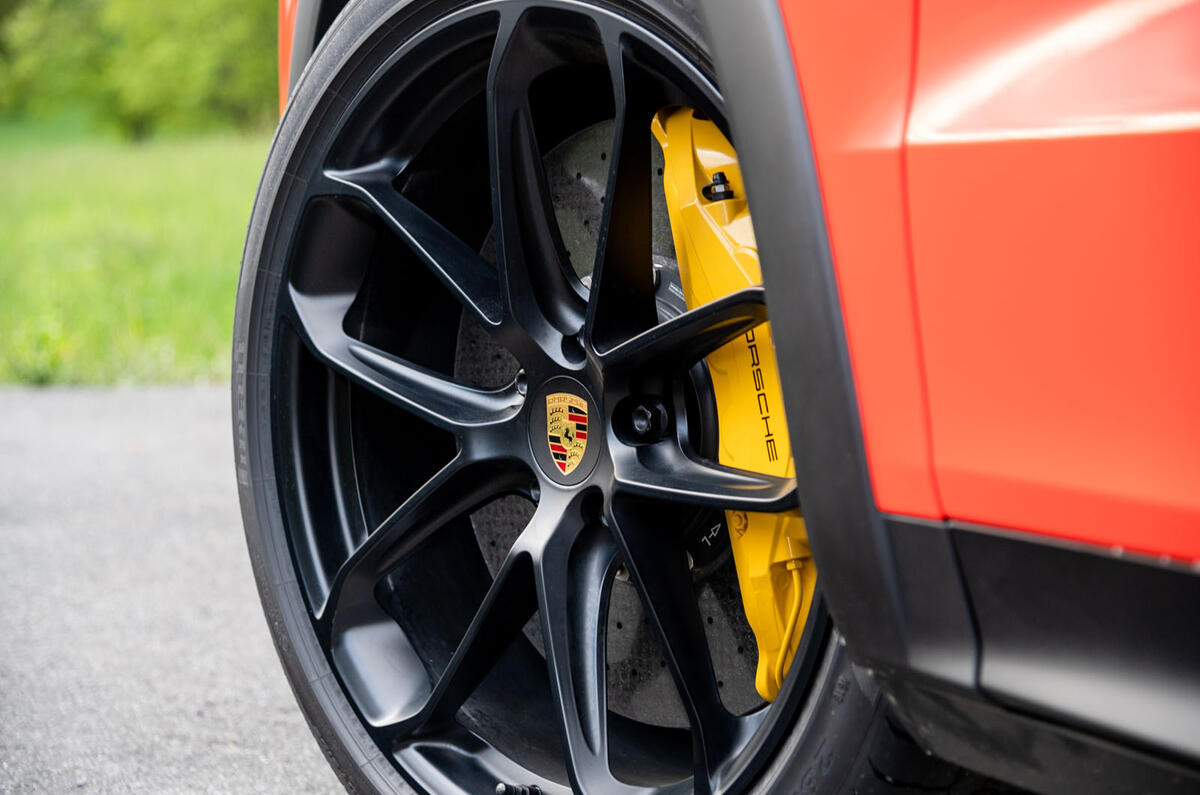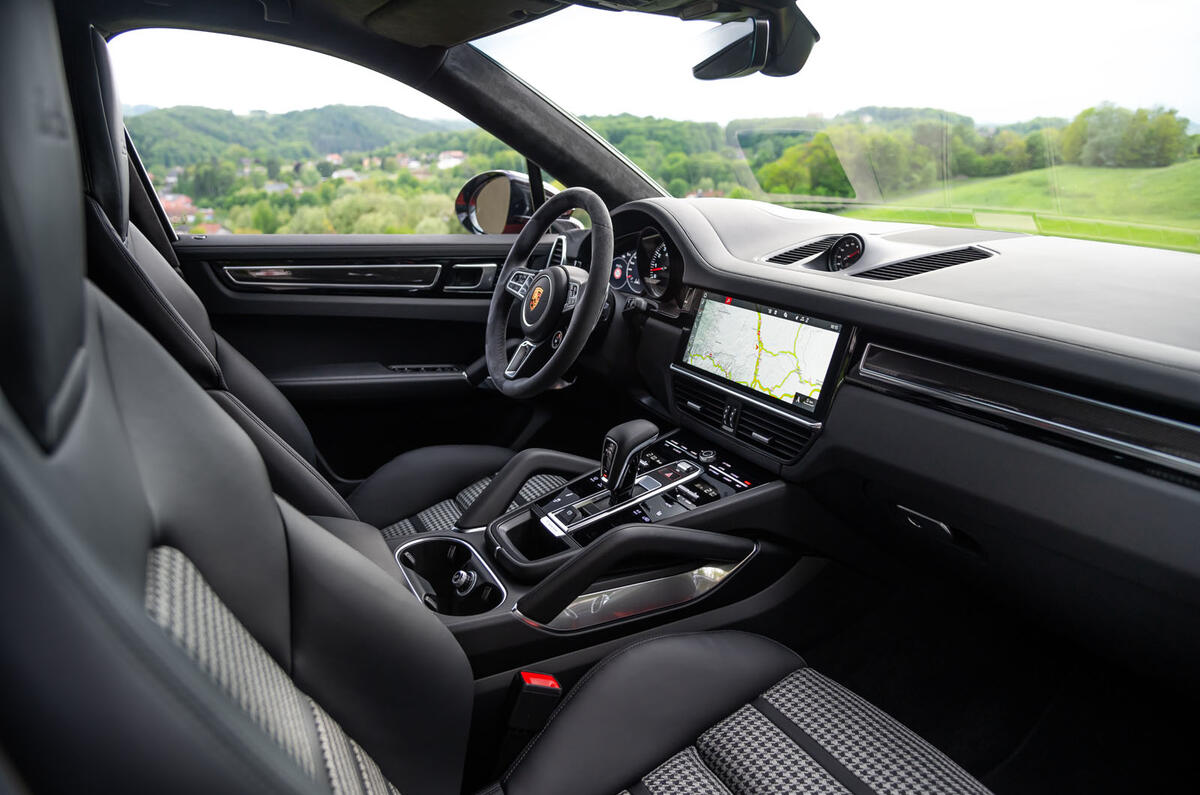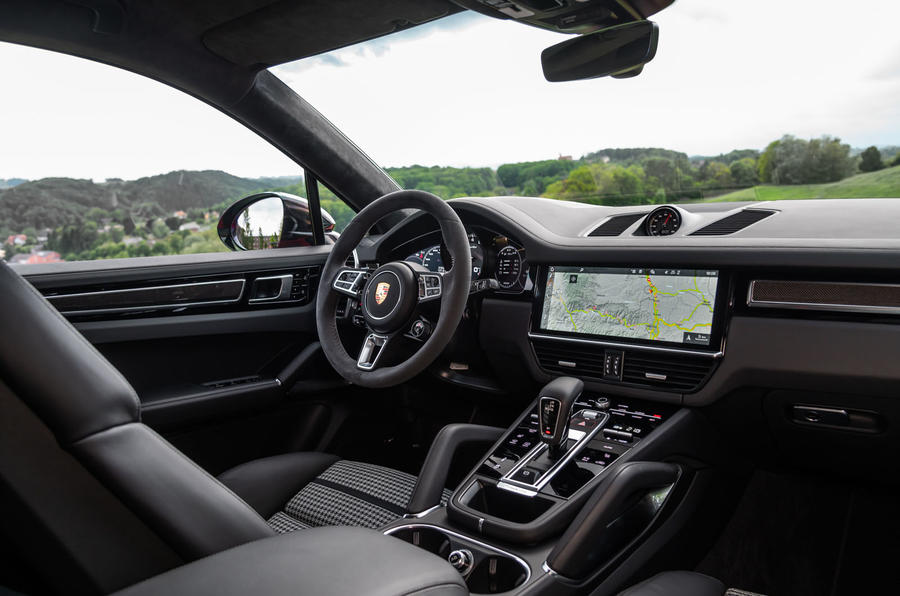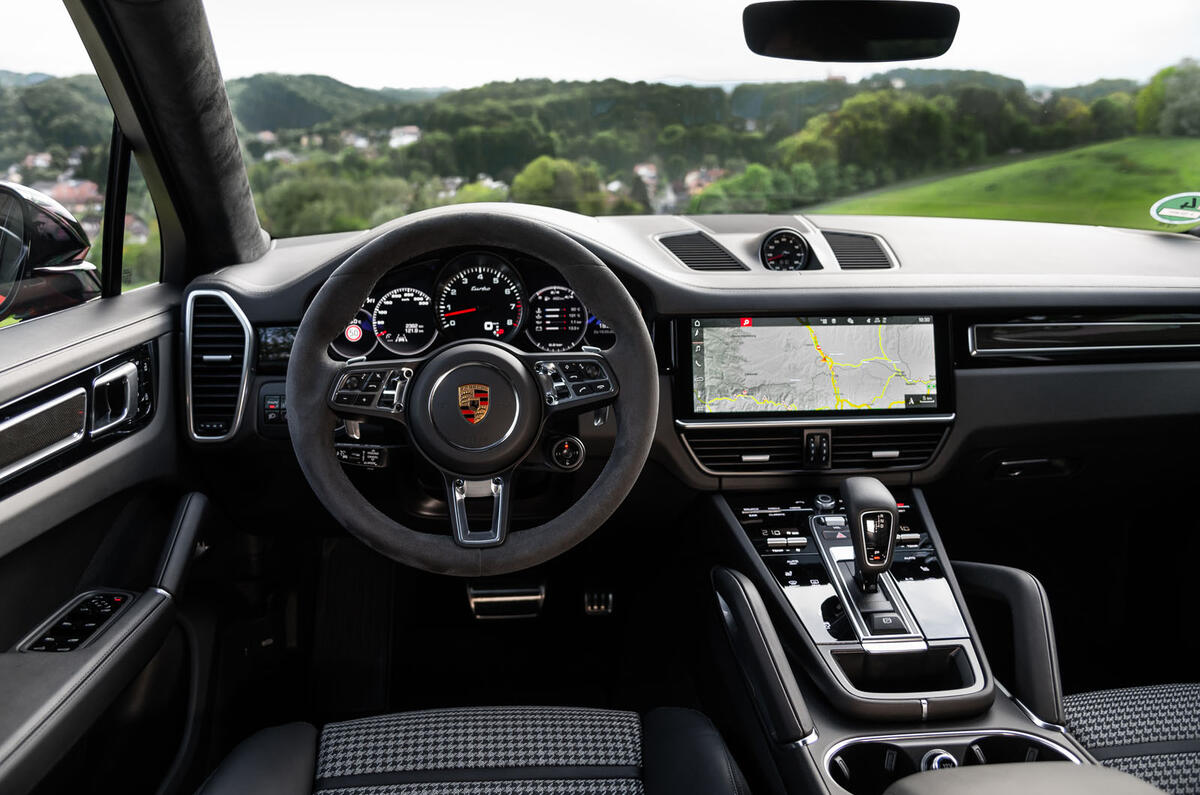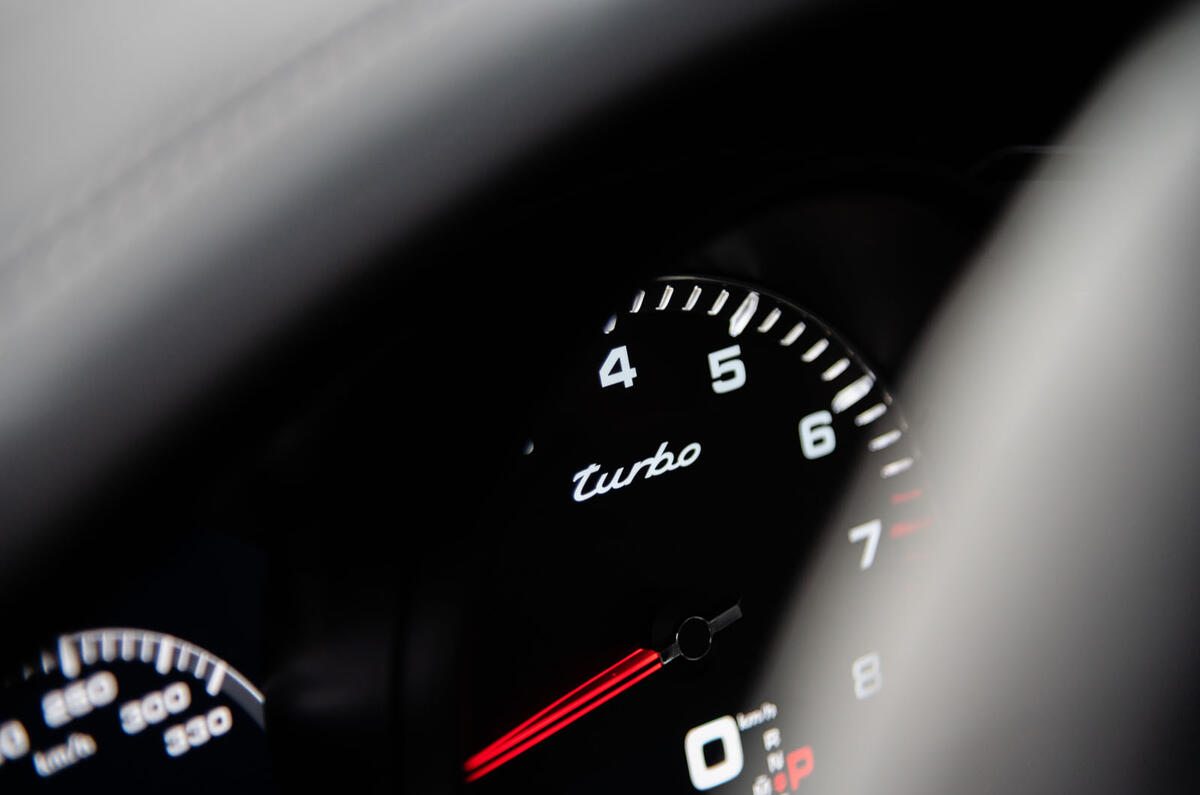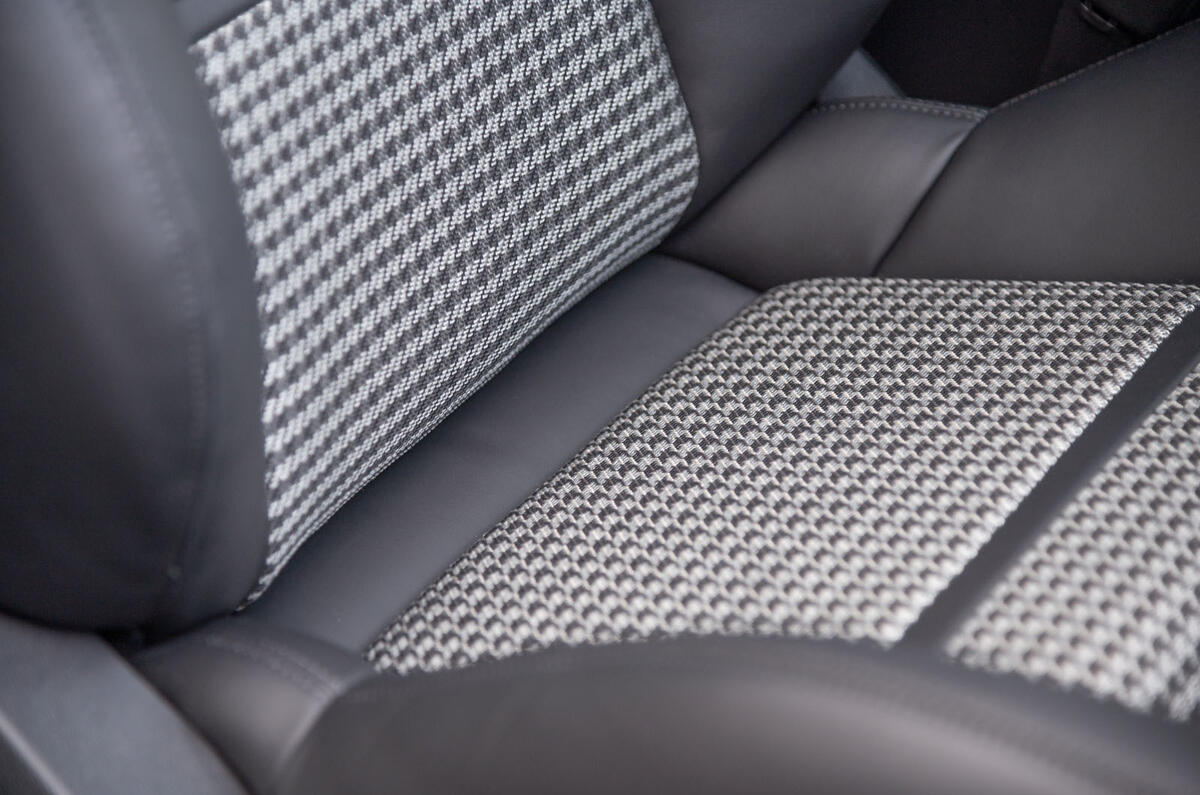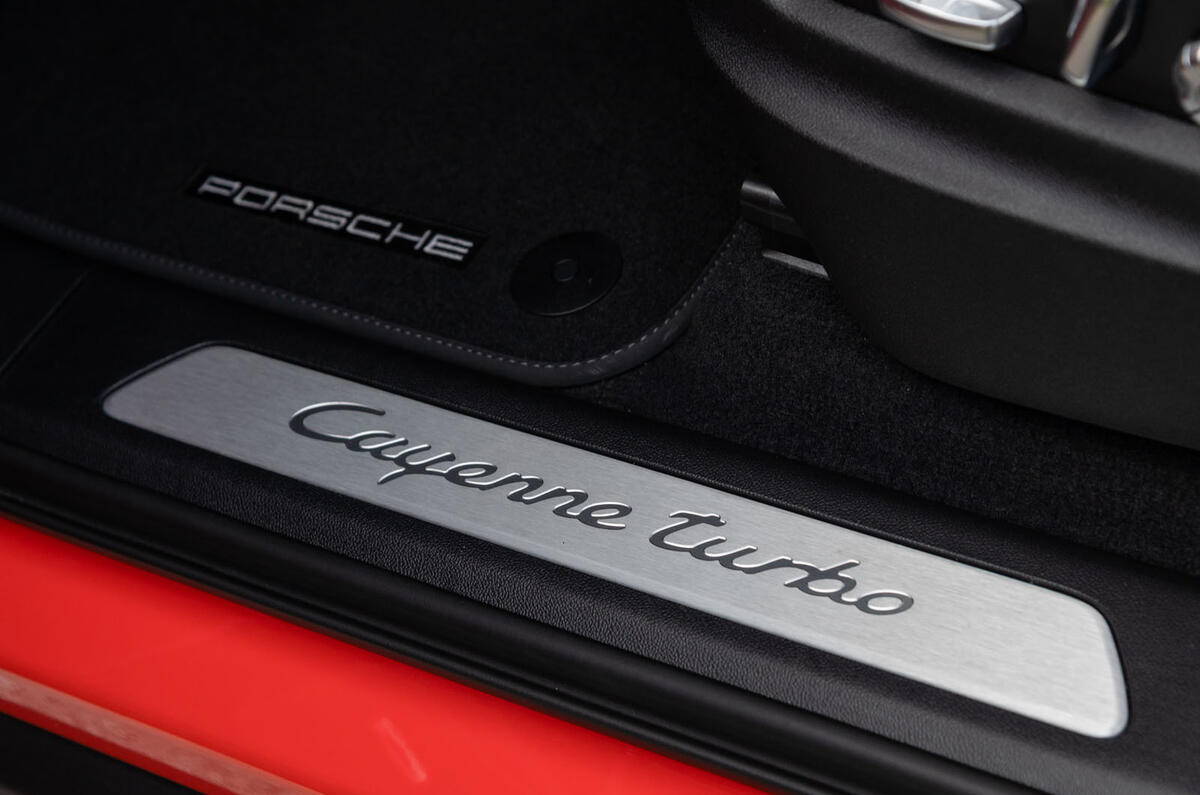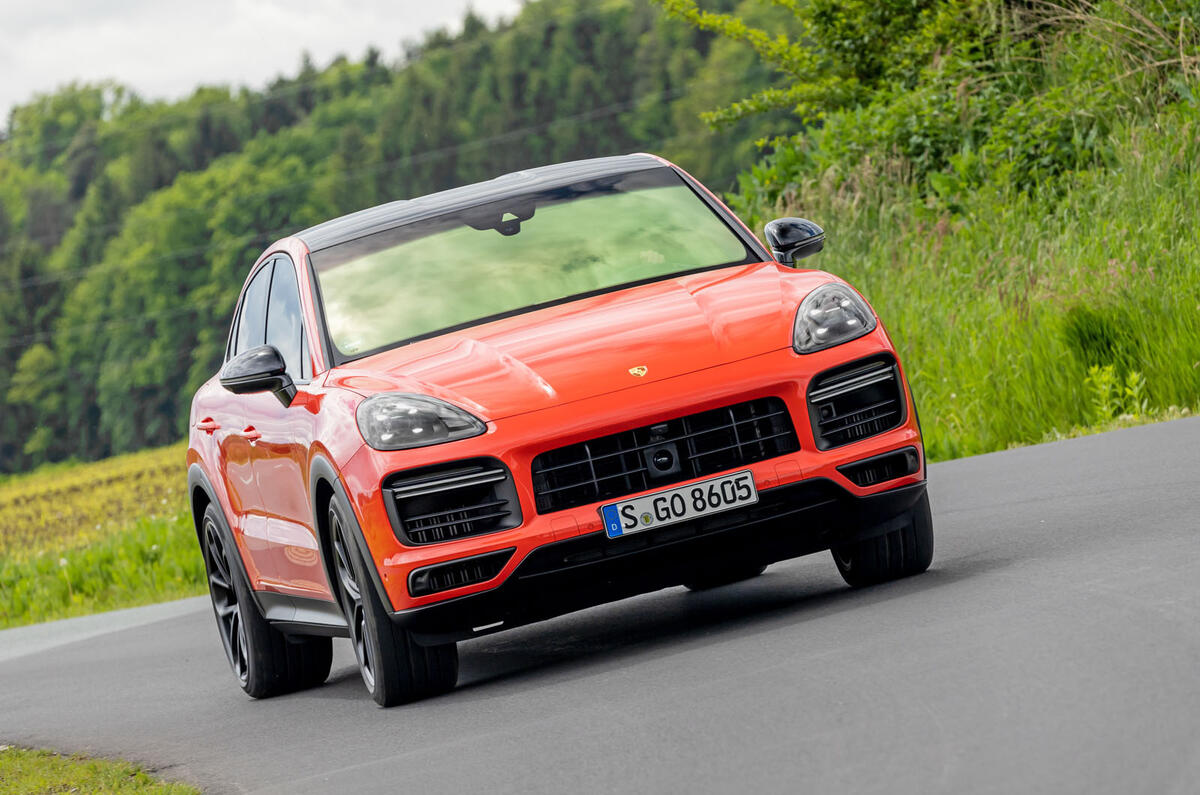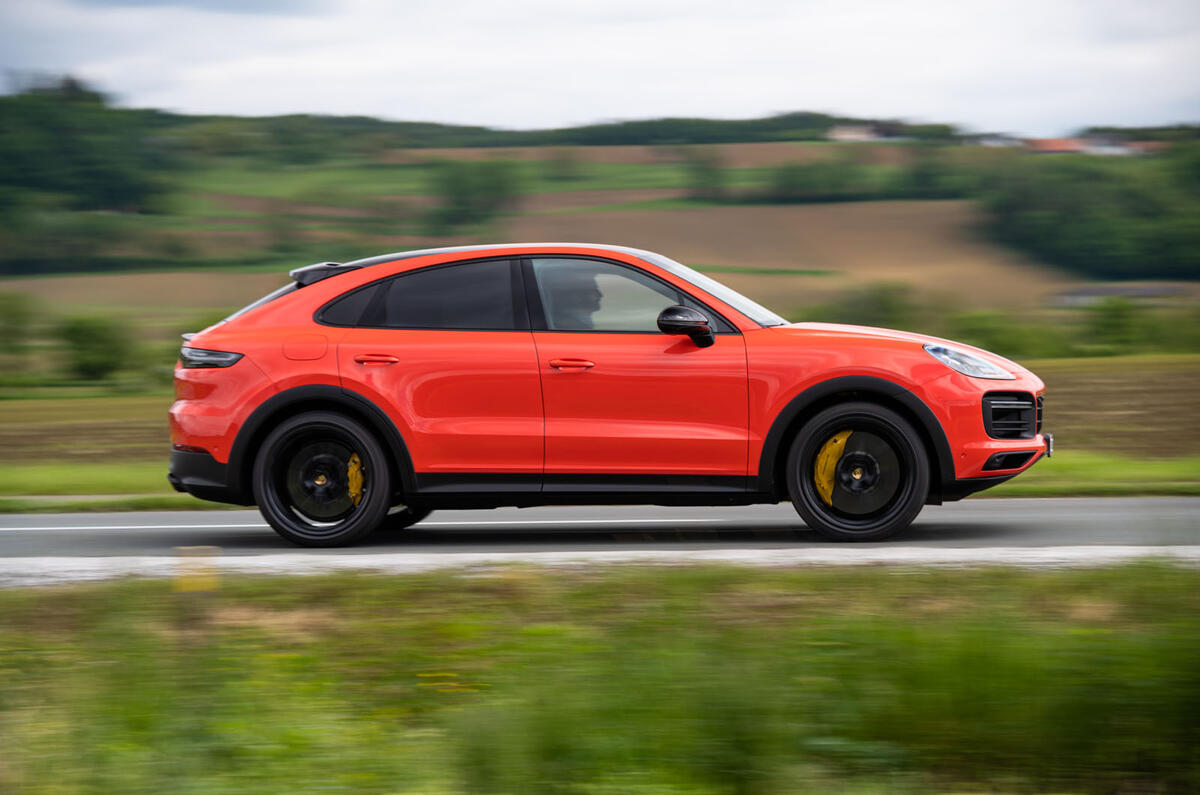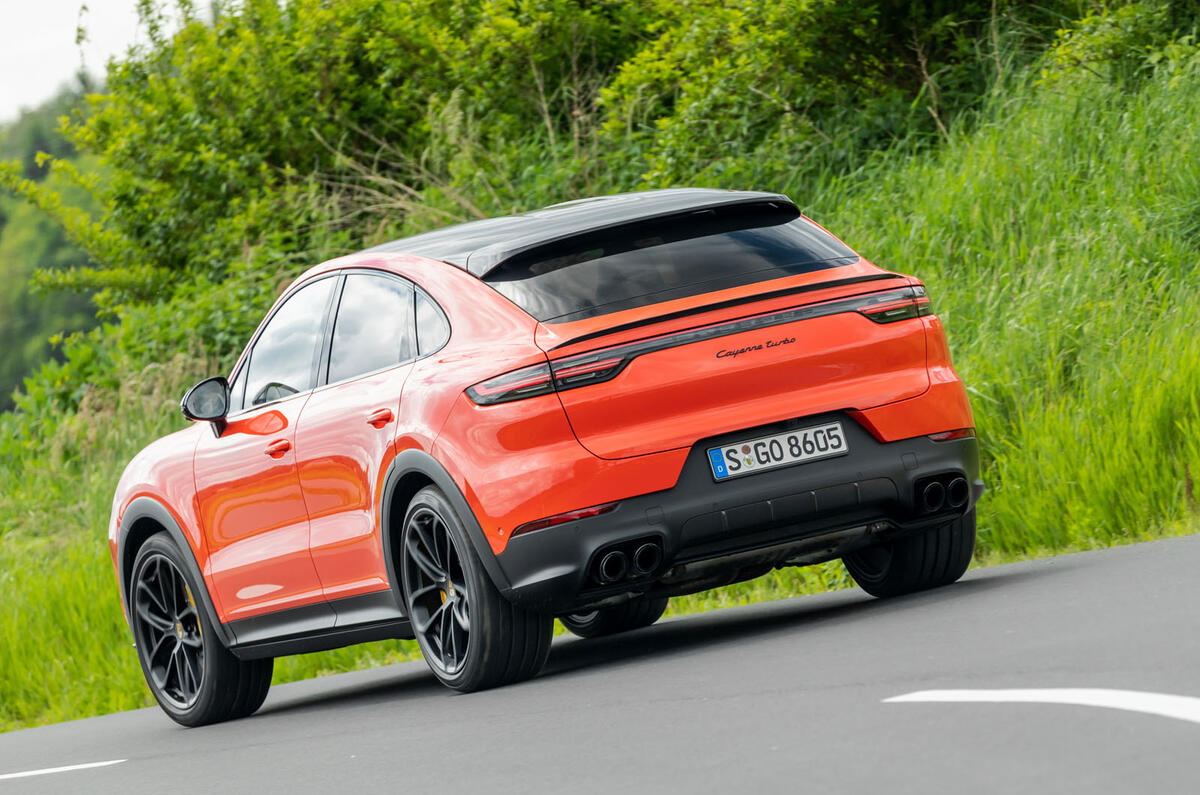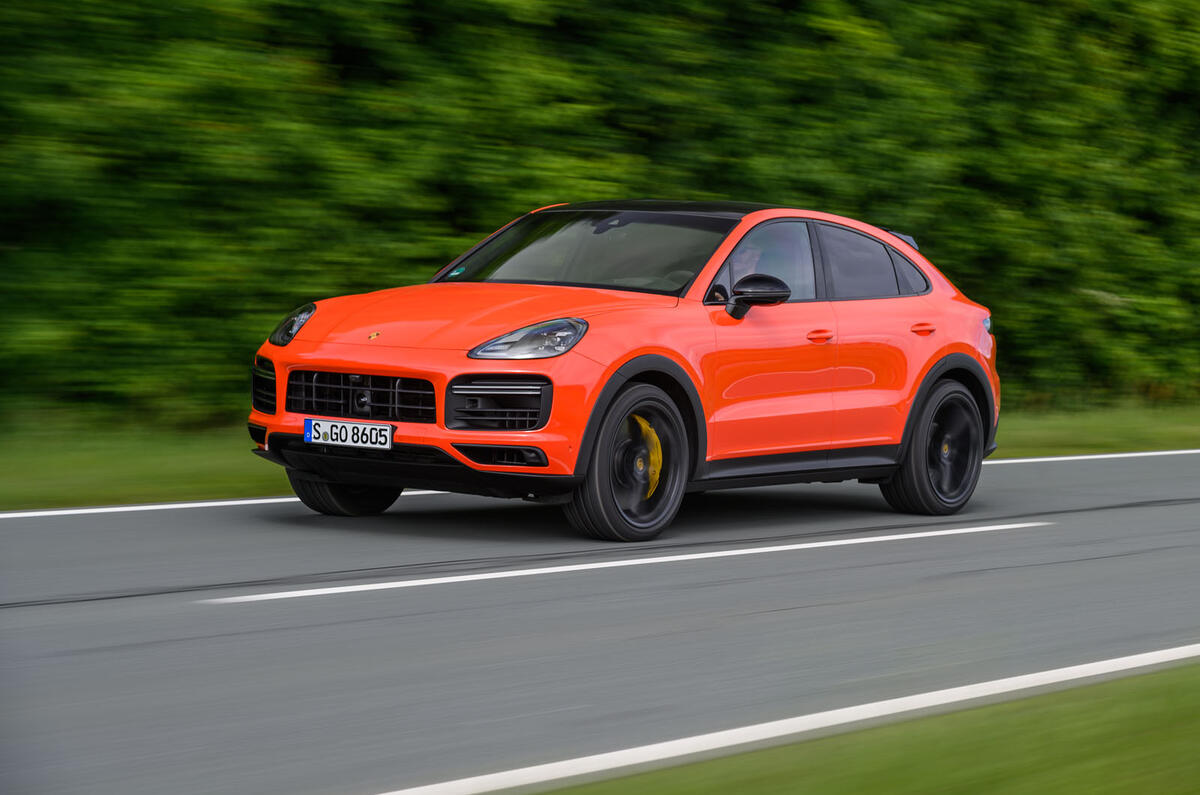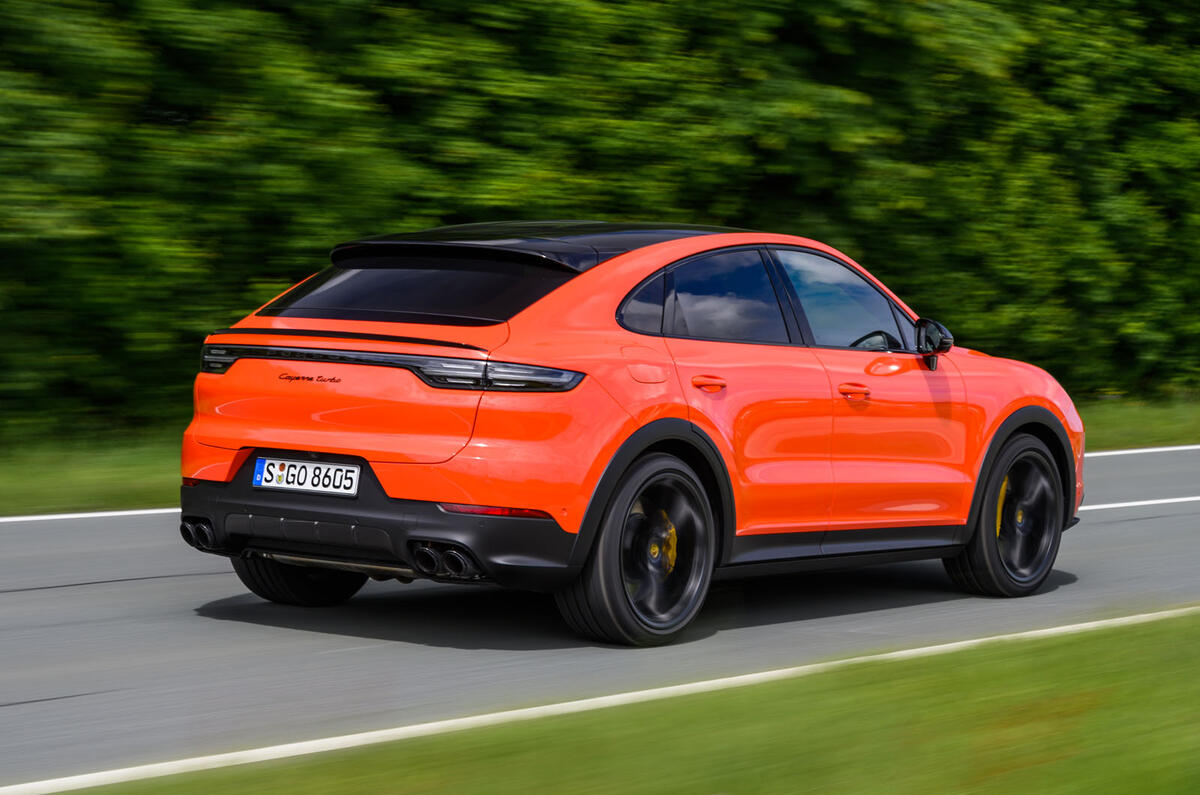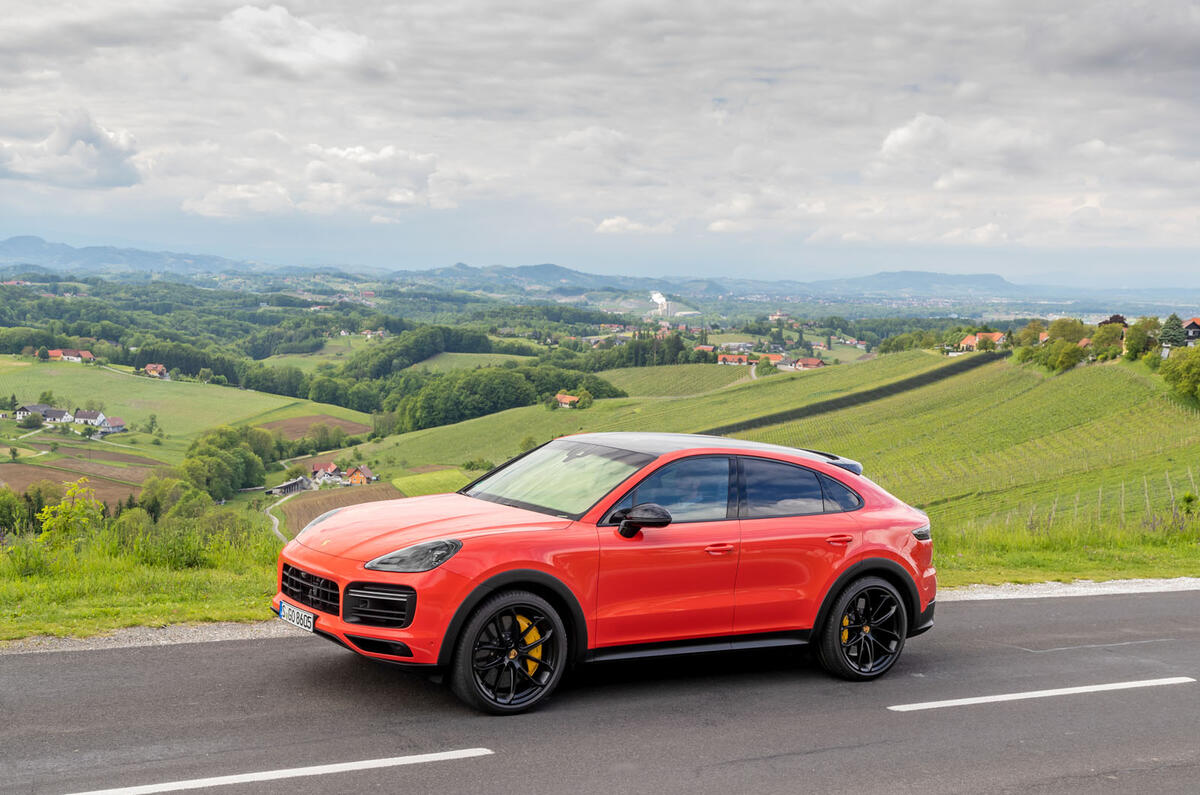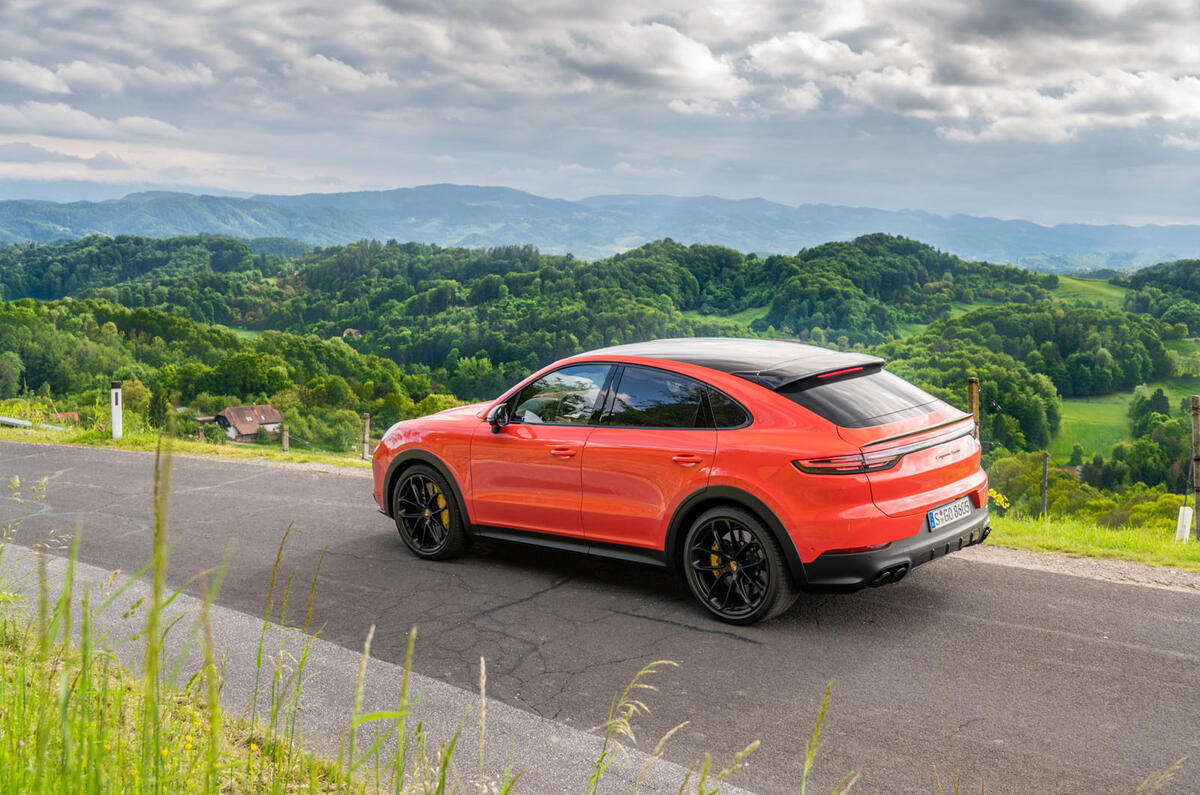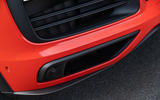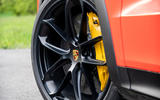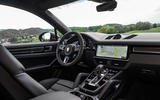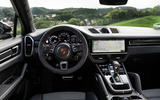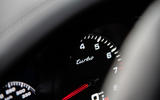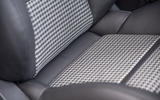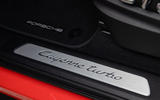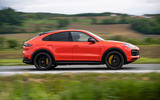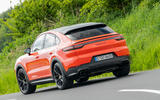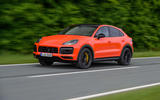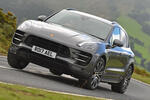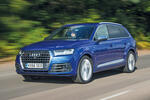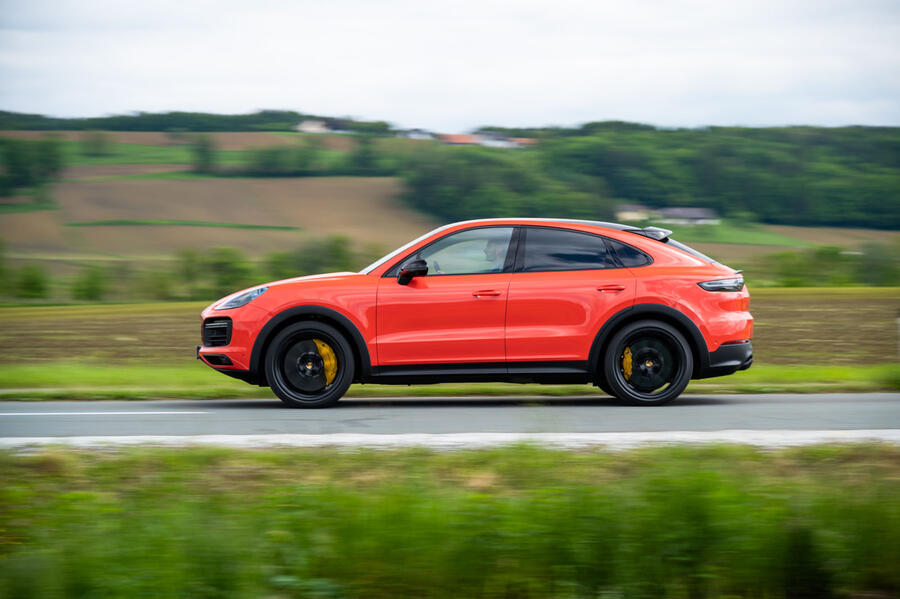Perhaps aware that this could be mistaken as a mere marketing exercise, Porsche has attempted to add some eye-catching engineering. For starters, there are two roof options - a full-length panoramic glass job or a carbonfibre panel. The latter saves 21kg and gets a distinctive ‘double bubble’ finish similar to that of the 911 GT3 RS, which perhaps isn’t the sort of connection that car’s creators would like made.
How does the Coupé compare to the standard Cayenne?
The carbonfibre roof is part of a number of ‘Lightweight Packages’ that can be specified, each designed to reinforce the point that the Coupé is a more serious driving tool than the normal Cayenne. Each gets some carbonfibre interior and exterior trim inserts, a reduction in sound deadening material and natty checked cloth trim and Alcantara trim for the seats. All in, with the roof panel, these add up to a saving 22.4kg. To minimise mass further, there are some forged aluminium 22in alloy wheels that shave around 17kg from the unsprung mass. In total, that’ll be around £7500. Mind you, the Coupé needs all the help it can get because without the diet parts, the Turbo tips the scales at 2200kg, which is 25kg more than the five-door model. Less really is more in this case.
Elsewhere on the exterior, you’ll notice at the trailing edge of the roof there’s a large fixed spoiler, which works in partnership with an active spoiler housed at the base of the windscreen. Capable of extending by 135mm, it’s deployed at speeds in excess of 56mph and is claimed to increase aerodynamic pressure over a rear axle that’s 18mm wider. Of course, for the peacocks among us, it can be manually raised at any speeds simply by prodding a button.
Climb into the Cayenne Coupé and you’ll find that not only is there a fractional reduction in space, there are also fewer seats. In place of the standard car’s rear bench are a pair of individual chairs separated by a deep trinket tray and a pair of cupholders - although a 2+1 layout can be ordered at no extra cost. On the plus side, the squabs have been lowered by 30mm, offsetting the lower roof.
However, boot space has shrunk considerably, from 745 litres to 625 litres. Folding the rear bench liberates 1540 litres, which is 138 litres down on the standard car. Bear in mind the Cayenne Coupé Turbo’s figures are lower again, at 600 litres and 1510 litres respectively.
The rest of the interior is largely carried over unchanged, with the same comprehensive dashboard with its wall-to-wall TFT displays. And of course the fit and finish are first rate, with top-notch materials used throughout. It oozes premium appeal, with the four-seat layout and lower roofline helping to create a more bespoke and cosseting ambience.
Mechanically it’s business as usual too, and from launch you get the same engine line-up (minus the plug-in E-Hybrid) as the Cayenne. That means the same choice of 335bhp or 434bhp 3.0-litre V6 in the entry-level and S models respectively, and a 542bhp twin-turbo V8 for the Turbo, which is what we’ve driven here. All engines get the same ZF transmission mated to four-wheel drive that features the firm’s ‘hang-on’ clutch, which means on the road it’s essentially rear-wheel drive unless the computers detect wheelspin and send torque forward.
Essentially the chassis stays the same too, with independent suspension. However, the Coupé’s rear axle is 18mm wider than the Cayenne’s, the PASM dampers are now standard on all models and the Turbo gets the three-chamber air suspension - an option on the other two. You can also specify the 48V Porsche Dynamic Chassis Control (PDCC) that features active roll bars that aim to eliminate lean in the corners. On top of that, there’s the Porsche Torque Vectoring Plus (PTV Plus) rear differential and the rear wheel steer axle. Predictably, all this gubbins was fitted to our test car.

